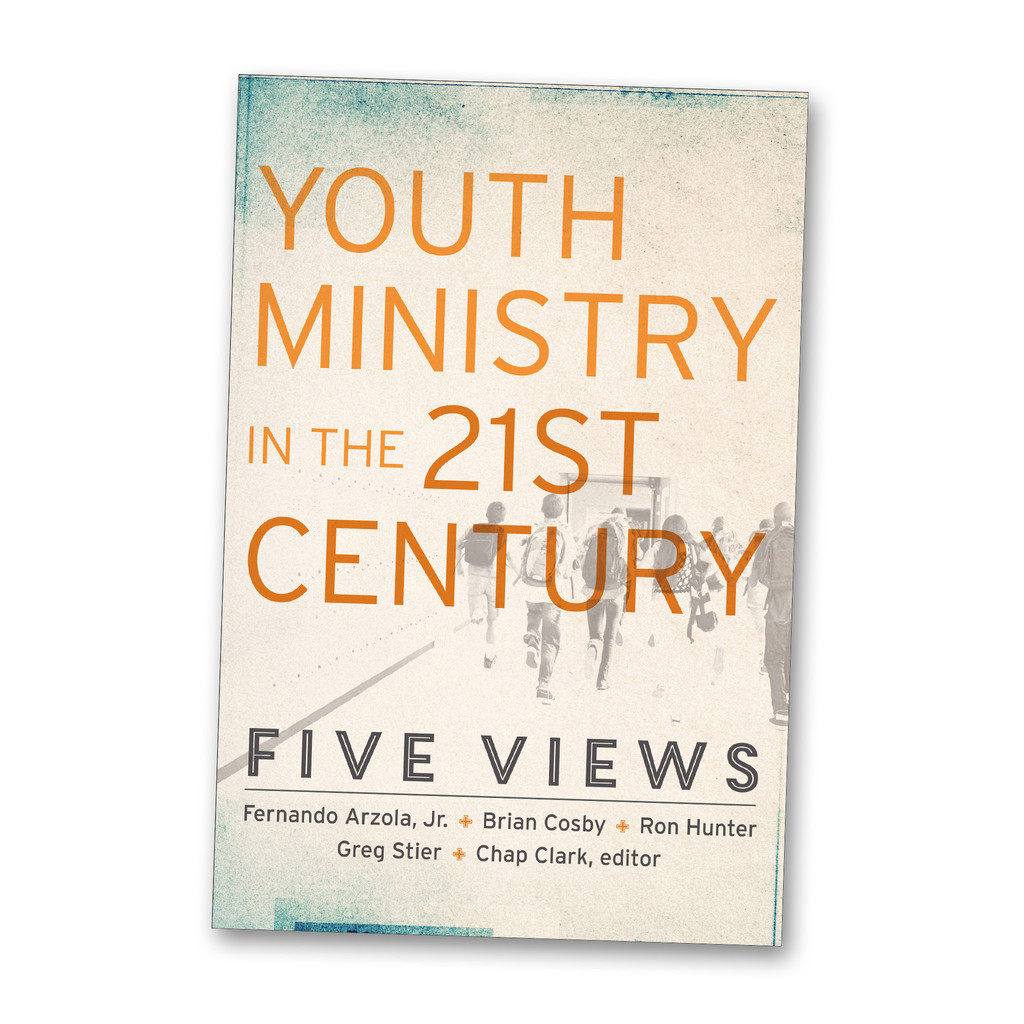
DANNY MITCHELL
October 22, 2015
Youth Ministry in the 21st Century: Five Views. Chap Clark, Ed. (Baker Academic, 2015)
 Writing book reviews can be a tricky thing.
Writing book reviews can be a tricky thing.
After all, a book review is ultimately only one person’s opinion about a particular book. I have often wondered why I should trust the opinion of a reviewer that I most likely don’t know, about a book that I have not read. And yet, I regularly find myself reading these reviews to help determine whether I should purchase a book.
If you find yourself in a similar conundrum regarding this review of Youth Ministry in the 21st Century, let me cut to the chase and say that this is an important enough book in the evangelical youth ministry world that every youth ministry practitioner should take the time to read it. Whether or not you like the book, or are able to find direct application to your ministry, is something that you will have to decide. But the book merits serious consideration for those who work with junior high and high school students.
There are three reasons that I am able to make such a bold claim about this book.
- First, to my knowledge, this is the only time any attempt has been made to present a theologically conservative “Reformed” view of youth ministry through a publisher that appeals to a broadly evangelical audience. While I believe that a Reformed view of youth ministry is more comprehensive than Brian Cosby was able to present in this book (you can read more of his view in his book Giving Up Gimmicks: Reclaiming Youth Ministry From an Entertainment Culture) and while I do not agree with every aspect of Cosby’s presentation of Reformed youth ministry through a “means of grace” grid, I am glad to see Reformed Theology being discussed in the same conversations where youth ministry in being talked about. It was particularly helpful to read Dr. Cosby’s critiques of the other views (Gospel Advancing, Adoption, Ecclessial and D6 view). He does a solid job helping readers see pros and cons of each authors presentation of their view. It is my hope that this book will help move more and more youth ministry discussions toward the theological foundations that we should be building our “Reformed” youth ministries on.
- The second reason is that the predecessor to this book, The Four Views of Youth Ministry in the Church, was written about 15 years ago. This book played safe by not diving deep enough into the underpinnings of each view. The book gave us fresh categories to classify the models of youth ministry that we were employing, but not enough foundational depth to help us when the inevitable shifts in youth ministry methodology came. Youth Ministry in the 21st Century seems to make some corrections in that area. The rejoinders written by the authors, after each view is presented, help the reader see more clearly the strengths and weaknesses of the various views. I am not much of a fan of youth ministry books that focus on discussion starters “that will get any student talking” or “101 surefire retreat ideas.” What I am a fan of is a youth ministry book that pushes readers to think deeper thoughts about youth ministry, especially when that book helps us connect the dots between our theology and our methodology. Thankfully, Youth Ministry in the 21st Century, is a book that does both of those things well.
- The last reason has to do with the timing of this book. We are emerging from a period of about ten years when a glut of negative research suggested that youth ministry wasn’t successfully discipling young people into a lasting faith. In the youth ministry world, this was like the shifting of tectonic plates and many of us were shaken to our ministry cores. Books like Youth Ministry in the 21st Century are helpful as we continue to move beyond the research toward new solutions. Through its thoughtfully written views of youth ministry, this book reminds us again that youth ministry is not dead. There are men and women who are called to the next generation who wrestle with not only the methods and models of next generation ministry, but the theology behind them. I anticipate that if you read this book in its entirety, you will, at times, be bothered, encouraged, and challenged. The beauty of a book like this one is that in the written interactions between the authors, we see that when a mutual calling is shared, respectful dialogue is possible even when there are points of disagreement.
You won’t have to agree with everything in this book to find it valuable. In fact, excluding Brian Cosby, I may have found more with which I disagreed with which I agreed. But I am certain that this book has helped sharpen me in my calling to work with the next generation.

